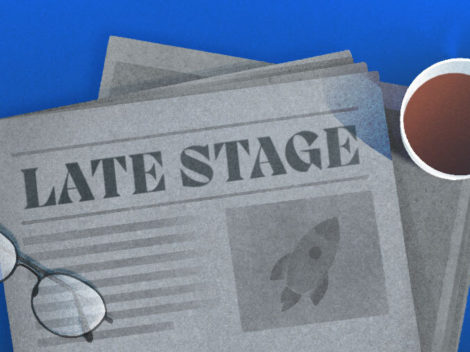In entrepreneurial finance and in life, it’s always important to know where the exits are, even if they are behind you.
Follow Crunchbase News on Twitter & Facebook
As a follow-up to the Q1 2018 Global VC Investment Report, published yesterday on Crunchbase News, we present an analysis of startup liquidity in the first quarter of 2018. If the investment report was all about “money in,” this one is all about “money out.”
There’s a lot to cover, but here are the key takeaways:
- Bullish Key Finding: Venture-backed M&A may be be reversing a long-standing downtrend, but it’s still a bit too early to tell for sure.
- Bearish Key Finding: There’s still a lot of employee and investor equity looking for a path to liquidity. Despite a relatively active market for IPOs, some of the biggest offerings anticipated for the rest of 2018 (like Lyft and Airbnb) have been pushed back.
But let’s not dilly-dally any further. There’s a lot to cover, so let’s see what happened under the hood of global startup liquidity in Q1.

Paths To Liquidity: An Overview
Unlike many other asset classes, private company equity is typically very hard to convert to cash because the market is very illiquid. In plain English, that means there are few participants in the market, and the pace of transactions is low. So investors who want to sell (or “exit”) their positions in a startup company often have to wait a fairly long time.
If you own stock in a public company and are disappointed with its financial results, or you don’t like the cut of a new executive’s jib, or for any reason at all, you can probably sell your shares that same day.
Not so with startup stock. A combination of standard contractual restrictions on transfer or sale and a generally illiquid market for shares creates a situation where basically two exit options exist:
- A private company can get acquired by another company. Especially if the transaction was all-cash, investors get a direct path to liquidity.
- A private company can list its shares or issue new shares to raise cash on a public stock market. This typically converts illiquid private shares into publicly-tradable shares, but the specifics of that conversion process depend on existing capital structure and other terms of the initial public offering.
In other words, turning startup equity into cash (or, if not cash, salable assets) is a bit of a challenge, but it’s one the market just has to deal with.
As we dig into exit data from Q1 2018, we’ll start with mergers and acquisitions.
Venture-Backed Acquisitions
In terms of deal volume, mergers and acquisitions (M&A) are by far the most common way startups get liquidity for their various stakeholders. Like with technology growth funding rounds, the dollar value attached to these deals can vary wildly, as the chart below shows.

Due to variability in acquisition price, we’ll focus more on deal volume here. (As an example of why dollar volume matters less here: just a few ten-figure deals from one quarter can skew dollar volume up, as we’ll highlight below. There’s less volatility in deal volume over time.)
According to reported data in Crunchbase, deal volume is basically flat relative to Q1 2017 and slightly up relative to the prior quarter.
What might be ho-hum results on most other metrics is, if you’ll forgive the financial pun, a big deal here. Why? Because in all of Crunchbase News’s prior quarterly global venture capital reports—since Q1 2017—M&A deal volume has been negative year-on-year. Whether Q1 marks the start of a reversal in a multi-year trend of shrinking M&A opportunities, or if it’s just another point in a generally downward trendline, is something to revisit at the end of Q2.
In Q1, there were a number of very large exits for venture-backed companies. The table below shows some of the more interesting deals from the past three months.

Some of these deals got more attention than others. For example, much hay was made about Amazon’s billion-dollar acquisition of smart doorbell-maker Ring in late February. And Brazilian ride-hailing app-maker 99’s acquisition by Didi Chuxing only tightened the SoftBank-backed, Beijing-based transportation giant’s global network of on-demand transportation brands.
But the story here is one of consolidation in the software developer-focused market. Although Mulesoft went public in March 2017, the $6.5 billion acquisition deal from Salesforce gives the the API integration platform company an honorary spot on the list of notable venture-backed exits. (Crunchbase News unpacked the Salesforce deal when it was announced in March 2018.)
With notable M&A activity in cybersecurity, natural language processing, containerization, cloud hosting, and other areas, Q1 2018 was particularly good for software and IT infrastructure M&A.
Initial Public Offerings
Putting shares up for sale on the open market in an initial public offering (IPO) is the second path to liquidity for investors, founders, and employees at venture-backed startups.
The latter half of 2017 was particularly good for IPOs by tech companies, opening a window to public markets that had been somewhat locked up for a while. The first quarter of 2018 was, for the most part, a continuation of prior momentum.
Here are some of the more notable tech IPOs from Q1.

One of the more interesting aspects to this list is the companies based outside the U.S. Despite being headquartered abroad, many companies opt to trade their shares on U.S. markets. Brazilian payments company PagSeguro, and Chinese companies like iQiyi (a spin-off from Baidu) and Bilibili all opted to raise capital by listing on U.S. exchanges.
Some foreign companies’ public market debuts were successful. PagSeguro, for example, closed up 35.8 percent on opening day in January. Market reception for Bilibili, a streaming site and internet community platform for anime and gaming fandoms, was more tepid. Its opening trade on March 28th was below the $11.50 per-share IPO price and shares closed at $11.19. Still though, the company raised $483 million in its IPO, more than many U.S.-based “unicorns” do when they go public.
And then there are some cases where U.S. listings don’t go according to plan, such as in the case of iQiyi, a company positioned as an Asian competitor to Netflix. Despite raising nearly $2.3 billion from underwriters in the largest Chinese IPO on U.S. markets since Alibaba, shares closed at $15.55 on the first day of open trading, down from an $18.00 per-share IPO price.
At least for Chinese companies that had previously looked to foreign stock markets, things may be changing. According to reporting from Bloomberg and elsewhere, China is launching a pilot program that would allow more Chinese companies to list their shares on Chinese markets through relaxed regulatory requirements.
This is not a Chinese equivalent of the U.S. JOBS act, which made it easier for some American companies to raise capital. Rather, it’s an experiment in loosening restrictions on Chinese companies that operate as variable interest entities (VIEs), which previously haven’t been allowed to list their shares with financial markets on the Chinese mainland. (A more in-depth discussion of VIEs is a bit beyond the scope of this report. Bloomberg reporter Jennifer Surane explained why Chinese companies like Alibaba were forced to go public in the U.S. and how that might change under the new initiative.)
That, in combination with an increasingly isolated and frosty approach to foreign economic relations from the U.S., may make U.S. stock markets less appealing to foreign companies—particularly those from China.
As far as the U.S. goes, it was a good quarter for SaaS and pharmaceutical companies. On the software side, there were strong showings from Dropbox, Zscaler, and Cardlytics. And for life sciences startups, ARMO BioSciences, Solid Biosciences, and Eyenovia raised considerable capital on public markets.
A Word About Secondary Markets
To pre-empt an objection: yes, there is a third path to liquidity. Private company shareholders may be able to sell their shares on the “secondary market.” But there’s still considerable friction involved:
- Merely semi-liquid secondary markets exist primarily for pre-IPO late-stage ventures
- Buy-side investors typically need to be accredited
- Shareholders on the sell-side of the transaction still have to navigate applicable securities law(s) and company-specific shareholder covenants.
- And there are relatively few participants in these markets.
Besides, these markets are fairly opaque, and mandatory reporting rules are more relaxed for public companies. This is all to say there isn’t a whole lot of open data available to derive trends from.
Conclusions
Things are looking up for private tech companies looking for a path to exit.
Barring the unexpected, public-market offerings are expected to remain strong throughout 2018, bolstered by robust results in the first quarter. According to research from consulting firm EY, shared in its Q1 2018 global IPO report, companies raised $42.8 billion worldwide through IPOs in Q1 2018. That’s up 28 percent from the first quarter of 2017. Granted, that includes a lot more than just tech companies, but as we showed earlier tech was well-represented in the mix.
But the most heartening data point here is venture-backed M&A. It’s been a long-standing trope in Crunchbase News’s prior quarterly global reports to comment on dwindling exit options for startups. Again, it’s too early to say whether the tide is turning in the venture-backed M&A market – and dashed hopes of recovery have broken many a heart before – but flat YoY performance is the best news in at least a year for close watchers of the metric.
Despite some added stock market volatility and geopolitical tension among the world’s largest economies, Q2’s outlook is generally positive.
Illustration: Li-Anne Dias

Stay up to date with recent funding rounds, acquisitions, and more with the Crunchbase Daily.









![Illustration of stopwatch - AI [Dom Guzman]](https://news.crunchbase.com/wp-content/uploads/Halftime-AI-1-300x168.jpg)


67.1K Followers